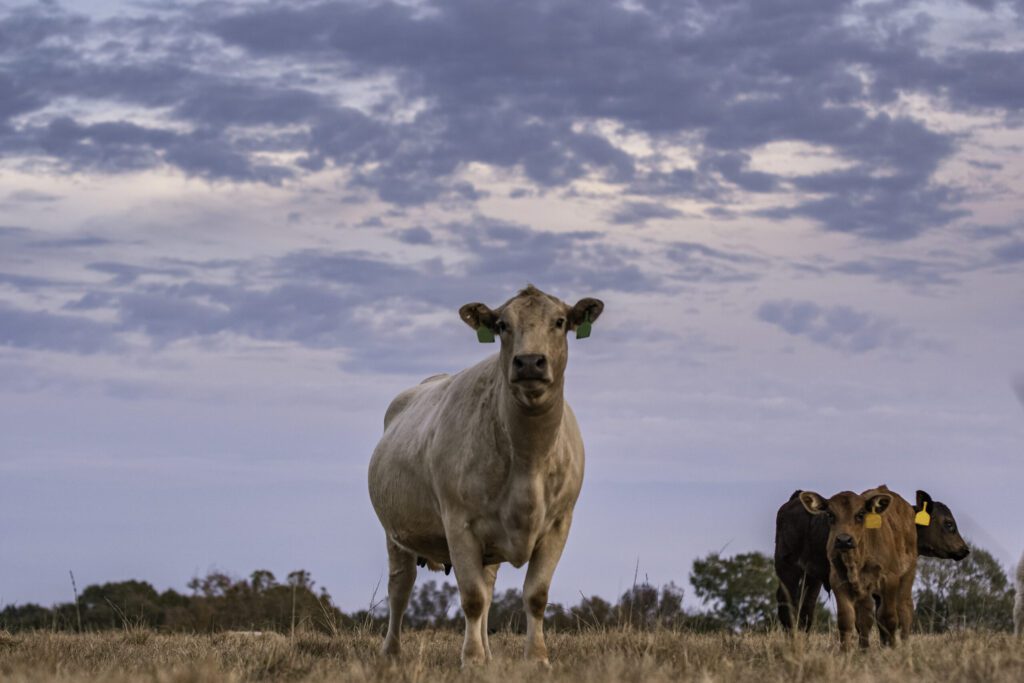sponsored by Farm Credit of Central Florida
by TERESA SCHIFFER
When people think of cattle, not too many envision Florida as a major producer of livestock. However, Florida has a long history with the cattle industry and is currently ranked number 13 in the U.S. for numbers of cattle. More than 5.4 million acres of Florida land are used for pasture and rangeland. That’s a total of 15.6 percent of the state’s overall land area.
The Economic Impact of Florida Cattle
Cattle have a significant presence in Florida’s economy as well as the ecology. In 2021, there were 1.63 million cattle and calves in Florida – about 1.7 percent of the total cattle and calves in the United States. Of those, 929,000 were beef cattle and 111,000 were milk cows. Approximately 450,000 calves are shipped to other states each year.
About 2.35 billion pounds of milk were produced in Florida in 2019, averaging out to 20,224 pounds per cow and 1.1 percent of the milk produced in the U.S. Florida’s main cattle-related product, however, is calves. The state produced 2.2 percent of the nation’s calves in 2019, or 810,000.
Florida breeders have made great progress when it comes to cultivating superior genetic traits in cattle. Florida breeders are a consistent source of seedstock for commercial herds around the world. Seedstock are cattle generally registered with a documented pedigree and breed association, then used as breeding cattle.
Cattle herds are found throughout the state, most heavily concentrated in Central Florida, including Polk, Osceola, Hardee, Highlands, Desoto, Okeechobee, Glades, and Hendry Counties. The cattle industry generates about $985 million annually in Florida while supporting 4,570 jobs (2018 data). The 2017 Census of Agriculture valued cattle and calf sales in Florida at $522 million annually and milk sales at $478 million. It is estimated that the state’s ranching and dairy operations support as much as $1.39 billion in revenue and 6,902 jobs throughout Florida when considering various multiplier effects.
Cattle and the Environment
Ranchland in Florida is composed of a mix of improved pastures, unimproved pastures, and native ranges. All three types of land require some degree of management. Ranchers utilize techniques such as controlled grazing and prescribed burning to improve the forage quality for their herds while simultaneously preserving the habitats of native plants and reducing the risk of uncontrollable wildfires.
Improved pastures are those lands that have been planted with an introduced grass that provides a higher forage value for cattle and then carefully managed. Unimproved pastures also are made up of introduced, high-forage grasses, but are not managed for high production. Native ranges are those swaths of land that remain open to native plant communities. All three types of land can be used for grazing cattle and will still support a high degree of biodiversity of native species.
Sensitive wetlands also benefit from management by cattle ranchers. In any well-managed pasture, fertilizer use is low and not a significant source of detrimental nutrient runoff. Even in improved pastures that are highly managed, the amount of fertilizer applied per acre is less than that used on other agricultural crops or urban landscapes. The cattle perpetuate the nutrient cycle by consuming the fertilized forage and then depositing those nutrients back into the landscape through their waste, thereby decreasing the need to fertilize those lands.


